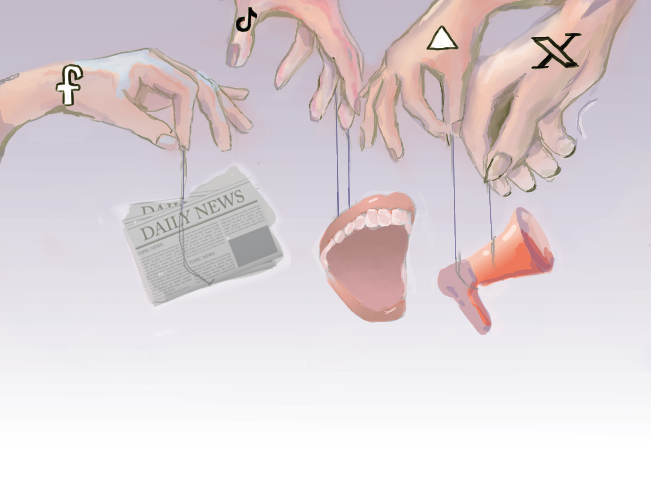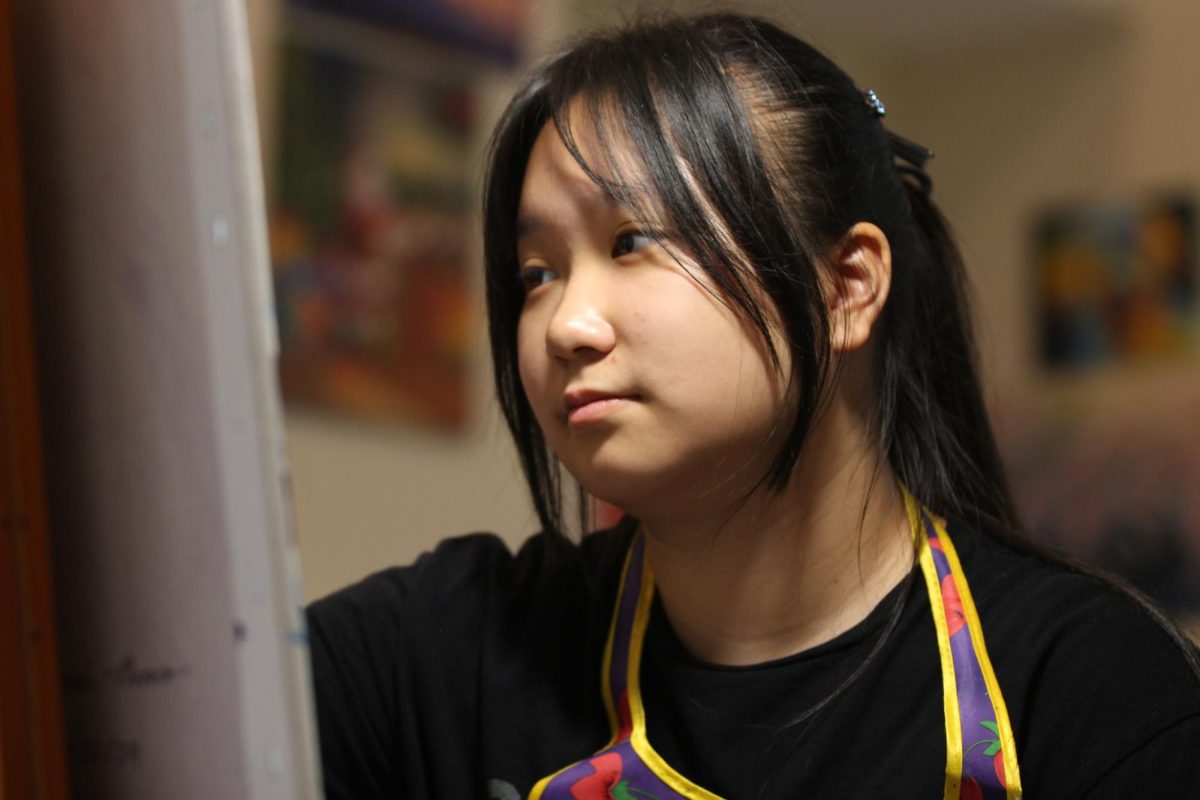With the total number of greenhouse gases emitted from the Earth on the rise, scientists are looking at the amount of energy and resources people use within their everyday lives. One way that scientists measure total energy consumption is with the creation of a carbon footprint.
According to Time for Change, a person’s carbon footprint is the total amount of greenhouse gases an individual utilizes that, both directly and indirectly, support their human activities. This includes their meat consumption, electric bills, methods of transportation and weekly expenses, among other factors. Once calculated, a carbon footprint tells a person how many Earths would have to exist to sustain their current lifestyle.
At Marjory Stoneman Douglas High School, the carbon footprint is influenced by the number of students and the size of the buildings that require resources for operation. Feeding students and faculty in the cafeteria, insulating buildings with air conditioning, powering the school with lights and electricity and copying paper for classrooms, all increase the school’s carbon footprint and, subsequently, the greenhouse gases being emitted into the atmosphere.
“Our footprint is probably the second largest in the district when we are talking about schools, just because of our student population,” Assistant Principal Tariq Qaiyim, who oversees facilities at MSD said. “You can have a school full of teachers who are more conscious than a same-size school with teachers that don’t care, so that would definitely be a factor in their everyday life, as well as operating the building. I think that we are probably more mindful, but also maybe more wasteful.”
One factor that contributes to MSD’s carbon footprint is paper consumption. Since January 2019, teachers and faculty have made a total of 3,372,889 copies; the largest number of copies made by a single teacher was 80,688, with 75,628 as a close second.
“I totally understand that at the end of the day, this is school and that some things require paper and that’s fine, but when you are going to ask a three-question quiz and they are fill in the blank questions, there is no reason to use a full sheet of paper,” Save What’s Left President Emily Wolfman said. “Again it is a convenience thing where teachers think it is so much easier to not have to cut the paper in half or not have to use the backs of the paper and again it’s understandable, but those little steps are what make the big difference.”
Another major factor influencing MSD’s carbon footprint is the lack of recycling occurring at the school. Instead of being picked up and set aside to be sent to the recycling plant, many custodians are throwing the recycling out with the normal trash. Similarly, some teachers do not have recycling bins, further forcing students to throw away plastics and papers because there is no other option.
“Even though we have all of these efforts to recycle, the custodians come pick it up and throw it away like regular trash,” Wolfman said. “It is really disheartening that we are putting in all of this time and effort to make the school a greener place, and the school is not following through to help the club with those plans. Also there are a lot of teachers that, even though it’s so easy to just come and get a recycling bin and put it in front of the classroom, aren’t doing so and now they have all of these students that have plastic water bottles, pieces of paper, all of that stuff, and have to throw it in the trash can.”
To combat this issue of greenhouse gas emissions, MSD has started implementing initiatives that would help decrease the school’s carbon footprint. Save What’s Left picks up recycling on their own, in order to ensure that recyclables are not thrown away with the rest of the trash.
“We could definitely reduce our carbon footprint. 100%,” Save What’s Left Sponsor Tammy Orilio said. “We just need to get the teachers on board with simple things like shutting their lights off when they leave the room and cutting down on paper use, like that’s what we are using Canvas for and just reusing paper as much as possible. Save What’s Left wise, we are also going to be trying to educate the school on single-use plastics and hoping to get something going in the cafeteria to collect food waste. Community-wide, we are hoping to get something going with ‘Plastic-free Parkland’ [an initiative to create an eco-friendly environment within local businesses] .”
At the district level, Broward County Public School’s carbon footprint is mainly comprised of their electricity, transportation and lighting usage. Because BCPS regulates 286 schools, they are responsible for creating an even larger impact on the environment.
However, BCPS’ Energy Conservation and Utility Management Department has implemented initiatives in order to combat their carbon footprint. The district’s Energy Tools for Schools program, founded in 2008, has contributed to the reduction of the carbon footprint by 10.07%. They have achieved this by providing a monetary incentive for schools, such as money given back once they reduce their energy consumption.
“In addition to the Energy Tools for Schools, we have completed several LED lighting retrofit projects, implemented water conservation measures like remote controls and awareness, and installed 15 photovoltaic systems that promote clean energy,” Energy Analyst for BCPS’ Energy Conservation and Utility Management Department Gianet Puma said. “We also have an Energy Management System that allows us to control, monitor and adjust A/C schedules and temperature setpoints for optimal energy consumption.”
Whether at a district, school or individual level, the smallest possible carbon footprint is optimal for environmental success. Local initiatives and programs, such as promoting recycling, decreasing paper consumption and monitoring air conditioning schedules, are all helping to decrease the total amount of greenhouse gas emissions produced by MSD and BCPS.
This story was originally published in the December 2019 Eagle Eye print edition.







![National Honor Society Sponsor Lauren Saccomanno watches guest speaker Albert Price speak to NHS members. National Honor Society held their monthly meeting with Price on Monday, Nov. 4. "[Volunteering] varies on the years and the month, but we have started a couple new things; one of our officers Grace started a soccer program," Saccomanno said. "We have been able to continue older programs, too, like tutoring at Riverglades. NHS's goal is to have as many service projects as possible."](https://eagleeye.news/wp-content/uploads/2024/11/xNOeKNVwu7aErpVyJHrHogagZUUcLLosjtbIat94-1200x900.jpg)

![Ice Ice Baby. Skating to "Waltz" and "Romance" during her long program, figure skater Ava Zubik competes at the Cranberry Open in Massachusetts on Aug. 12, 2022. She scored a total of 86.90 on her short and free skate program, earning fifth place overall. "I try to make it [competing] as fun and enjoyable as I can because it's my senior year, and so I want to really enjoy competitive figure skating while it lasts," Zubik said.](https://eagleeye.news/wp-content/uploads/2024/11/skater1-799x1200.jpg)
